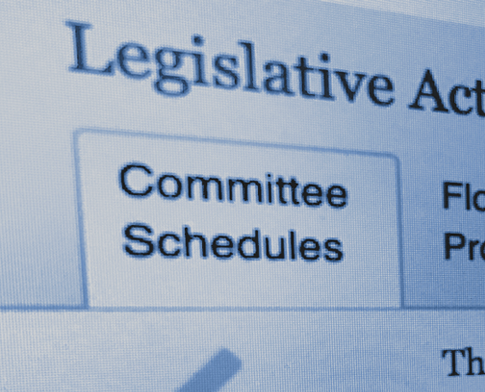Energy Update (July 6)
House Select Committee on the Climate Crisis Releases Report
On Tuesday (Jun. 30), House Democrats unveiled the Select Committee on the Climate Crisis’s majority report. The document is over 500 pages long, and is the most ambitious Democratic climate plan to date. The policy recommendations would reduce emissions 88 percent below 2010 levels by 2050, and generate benefits totaling roughly $8 trillion, according to an analysis by Energy Innovation, a nonpartisan energy and environment research firm. Additionally, the report encompasses more than 100 proposed bills.
“It will be a fight as long as it needs to be,” House Speaker Nancy Pelosi (D-CA) said Tuesday (Jun. 30).
“We will turn this report into law, saving the planet. Democrats know that the climate crisis is the essential crisis of our time,” she added.[1]
The report recommends a clean energy standard based on H.R. 2597 and other portfolio standards enacted by states which aim to hit net-zero emissions by 2040. For transportation, the report suggests a technology-neutral standard that would ensure all new light-duty vehicles are zero emissions by 2035.
The report also recommends carbon pricing as a compliment to the standards that spell out explicit emissions and green technology deployment schedules. Additionally, the plan includes a national climate bank based on H.R. 5416, which would establish the bank as a nonprofit and offer $35 billion in funding over 10 years.
Additionally, the report revolves around environmental justice considerations, and the report’s recommendations would vastly expand its environmental justice outreach through aggressive enforcement at the Environmental Protection Agency (EPA) and through the National Environmental Policy Act (NEPA).
Regarding investments in infrastructure, the report recommends moving towards a national supergrid. It would also incentivize the Department of Energy (DOE) and National Laboratories to work to develop a long-range electric infrastructure strategy to transmit clean energy around the country by 2040.
The report offers a road map that would invest in advanced reactor R&D and small modular reactors, and says nuclear can only move forward with enhanced reactor oversight regulations.
Additionally, the plan recognizes direct air capture as a technological part of reaching net-zero emissions. The report suggests the federal government launch a 10-year, multi-agency direct air capture R&D program that builds off of an initial $20 million provided for carbon capture and sequestration (CCS) technology in DOE’s fiscal 2020 budget. It also suggests Congress consider “providing financial incentives for carbon removal; preparing for large-scale subsurface storage of carbon dioxide; and creating markets for products made from carbon captured from the atmosphere.”
The report also embraces a plan to expand protections of America’s lands, waters, oceans, and wildlife. This includes a goal of protecting at least 30 percent of all U.S. lands and ocean areas by 2030 and protecting and restoring forests and grasslands. The plan recommends re-establishing a Civilian Conservation Corps, a job training program for young people to work in national parks and on public lands.[2]
To view the full report, click here.
To view a summary, click here.
To view a fact sheet, click here.
NDAA Energy Provisions
Earlier this week, Senators agreed to incorporate amendments to their version of the National Defense Authorization Act (NDAA) that would impose additional sanctions on the Russia-to-Germany Nord Stream 2 pipeline, increase funding for carbon capture and sequestration technologies, promote advanced nuclear technologies, and extend the Diesel Emissions Reduction Act.
Energy Secretary Dan Brouillette said in a letter to Senate Armed Services Chairman Jim Inhofe (R-OK) that the bill “violates DOE’s position as a distinct and equal Cabinet-level agency,” and “restricts the President’s capacity in exercising his responsibility to set budget levels, and subjects the priorities of NNSA to DOD’s discretion, potentially causing setbacks and underfunding of other critically important missions of the NNSA.”[3] The point of contention is related to provisions added to the NDAA that would grant authority to the Nuclear Weapons Council to stipulate funding for the budget of the National Nuclear Security Administration.
To view Brouillette’s letter, click here.
Senate leaders are working to clear a path toward a tentative amendment deal on the NDAA. Senate Energy and Natural Resources Ranking Member Joe Manchin (D-WV) pushed for an amendment that would strip the contentious provision from the NDAA. Senate Minority Leader Chuck Schumer (D-NY) attempted to add the Manchin amendment to a second manager’s package, however Schumer ultimately rejected his manager’s amendment unanimous consent request.
Inhofe’s second manager’s package would add two more energy and environment tangential amendments to the NDAA.[4]
The House Armed Services Committee added several measures related to PFAS contamination to its version of the NDAA. The committee marked up the bill late into Wednesday (Jul. 1) evening, and adopted a bloc of amendments, including one by Rep. Elissa Slotkin (D-MI) that would require the Department of Defense (DOD) to follow strict standards when cleaning up PFAS contamination from defense facilities.[5]
The President said he would veto the bill if an amendment to rename confederate bases is adopted. The amendment, offered by Sen. Elizabeth Warren (D-MA) would, within three years, remove from bases and other military property all names, symbols, displays, and monuments that honor or commemorate the Confederacy. The amendment has bipartisan support in Congress, and Secretary of Defense Mark Esper said he was “open to a bipartisan discussion.”
House Passes Infrastructure Bill
On Wednesday (Jul. 1), the House passed H.R. 2, the INVEST in America Act, with a vote of 233-188. The bill was focused on rebuilding roads and bridges, combating climate change, promoting clean energy, and rebuilding drinking water infrastructure.
Only two Democrats, Representatives Ben McAdams (D-UT) and Collin Peterson (D-MN) voted against the measure. Three Republicans voted in favor of the bill, Representatives Brian Fitzpatrick (R-PA), Chris Smith (R-NJ), and Jeff Van Drew (R-NJ).
Lawmakers spent several hours on the floor debating amendments filed to the bill. Notable amendments that passed include:
- An amendment by Representatives Debbie Dingell (D-MI), Jeff Fortenberry (R-NE), and Jamie Raskin (D-MD) that would add H.R. 3742, the “Recovering America’s Wildlife Act” to the bill. This would help states and tribes pursue habitat restoration and natural infrastructure projects.
- An amendment led by Rep. David McKinley (R-WV) that would authorize $500 million for the Department of Energy carbon capture and sequestration research program.
- An amendment led by Rep. Glenn Grothman (R-WI) that would allow the Secretary of Commerce or Secretary of Interior to consider the threat of invasive species before ordering a fish ladder to be constructed into a dam.[6]
The measure has virtually no chance of becoming law in its current form. Republicans have criticized the bill, comparing it to the “Green New Deal,” and President Trump has promised to veto it. Senate Majority Leader Mitch McConnell (R-KY) said the bill was, “pointless political theater.”
Upcoming Congressional Schedule
The House and Senate are in recess for the next two weeks.
The Senate will return the week of July 20, where they will continue their work on NDAA. The hope is that they complete the must-pass legislation by the end of the month. Senate Majority Leader McConnell (R-KY) said they will begin working on the next COVID-19 package after the July Fourth recess, ideally getting it off the Senate floor by Aug. 6, when they begin their August recess.
The House will return the week of July 20 for votes, however Committees are expected to hold hearings over the next two weeks while it stands in recess. The House is currently scheduled to adjourn on July 31 for the August break. The House has extended rules allowing for proxy voting and remote House hearings until August 14. This gives the House flexibility to finalize any additional COVID-19 package before the August recess.
The Democratic National Convention will be held August 17 – 20.
The Republican National Convention will be held August 24 – 27
References
[1] Adragna, Anthony. “Democrats unveil sweeping plan to tackle climate change.” Politico Pro, 30 Jun. 2020. https://link.edgepilot.com/s/f755c2ab/n30G-YvIkkKr74XH6nU_Pg?u=https://subscriber.politicopro.com/article/2020/06/democrats-unveil-sweeping-plan-to-tackle-climate-change-1959717
[2] Sobczyk, Nick; Dillon, Jeremy; & Dumain, Emma. “Here’s the skinny on the Democrats’ jumbo climate plan.” E&E Daily, 1 Jul. 2020. https://link.edgepilot.com/s/6a78830c/cRbeg0LFoU_R1-6CT4Bw5g?u=https://www.eenews.net/eedaily/stories/1063483561/search?keyword=climate%2Bcrisis
[3] Tamborrino, Kelsey. “Defense bill dives into Energy.” Morning Energy, 1 Jul. 2020. https://link.edgepilot.com/s/d0883c13/luRPTIKdzEyxYt-cf9n7jg?u=https://www.politico.com/newsletters/morning-energy/2020/07/01/defense-bill-dives-into-energy-788911
[4] Koss, Geof & Dillon, Jeremy. “Fight over DOE spending helps delay NDAA talks.” E&E Daily, 2 Jul. 2020. https://link.edgepilot.com/s/ab956261/zWPBuVQYA0KG0N07tUwX0w?u=https://www.eenews.net/eedaily/stories/1063491683/search?keyword=NDAA%2B
[5] Tamborrino, Kelsey. “Tucked inside the public lands bill.” Morning Energy, 2 Jul. 2020. https://link.edgepilot.com/s/d35025dd/-SM1COKaoketUIDKu0ALbA?u=https://www.politico.com/newsletters/morning-energy/2020/07/02/tucked-inside-the-public-lands-bill-788947
[6] Joselow, Maxine. “House passes massive infrastructure package.” E&E Daily, 2 Jul. 2020. https://link.edgepilot.com/s/64f5729f/luCyVPhdbEauRJP6IqVMRA?u=https://www.eenews.net/eedaily/2020/07/02/stories/1063489725
HOUSE.GOV
The Week Ahead
For the main events of the next week and more, go straight to the key events on the house.gov website.
SENATE.GOV
The Week Ahead
For the main events of the next week and more, go straight to the key events on the senate.gov website.


